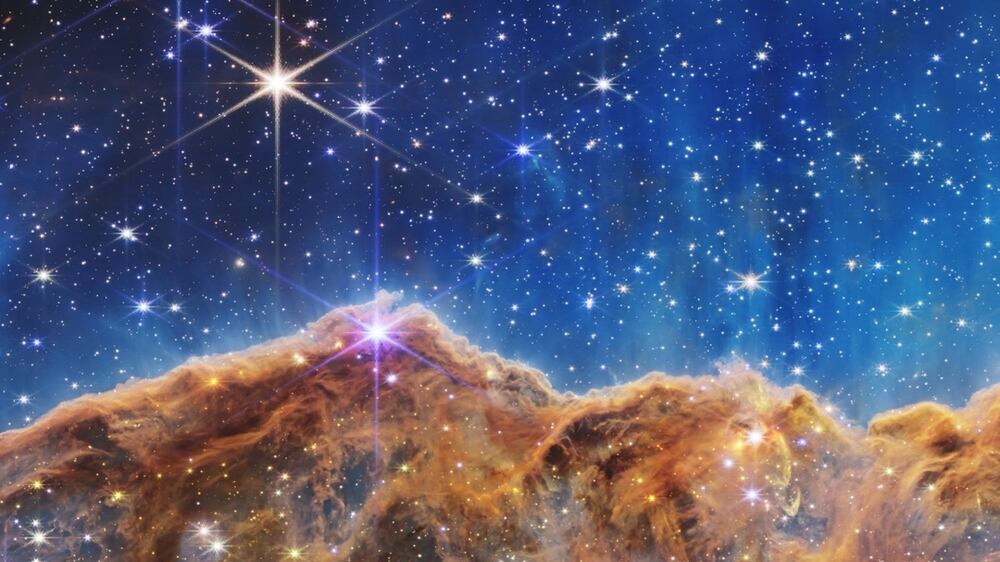The James Webb Space Telescope has captured an image of a young star about 1,000 light years away from Earth.
A rendering of the cosmic event, called Herbig-Haro 211, was released on Thursday by Nasa and shows jets of gases expelled by the star travelling at supersonic speeds.
The gases spewed from these newborn stars form shock waves that collide with nearby gas and dust at high speeds.
Latest observations by the $10 billion telescope have helped researchers learn more about the speed and direction of the shock waves.
“Earlier observations of HH 211 with ground-based telescopes revealed giant bow shocks moving away from us (north-west) and moving towards us (south-east),” Nasa said.
“Researchers have used Webb’s new observations to determine that the object’s outflow is relatively slow in comparison to more evolved protostars with similar types of outflows.”
Nasa releases new batch of James Webb Telescope images

A protostar is young star that is gathering mass from its parent molecular cloud.
Studying this protostar has helped show what our Sun was like when it was no more than a few tens of thousands of years old, with a mass of only 8 per cent of present-day Sun.
Nasa said that Herbig-Haro 211 would eventually grow into a star like the Sun.
The advanced science instruments aboard the Webb telescope is helping detect cosmic events better than previous space observatories.
An infrared camera on Webb helped to capture the temperature of Herbig-Haro 211, allowing researchers to record data on the shock waves caused by the spewing of the jets.
“Infrared imaging is powerful in studying newborn stars and their outflows, because such stars are invariably still embedded within the gas from the molecular cloud in which they formed,” Nasa said.
“The infrared emission of the star’s outflows penetrates the obscuring gas and dust, making a Herbig-Haro object like HH 211 ideal for observation with Webb’s sensitive infrared instruments.
“Molecules excited by the turbulent conditions, including molecular hydrogen, carbon monoxide and silicon monoxide, emit infrared light that Webb can collect to map out the structure of the outflows.”
Webb, operating since 2022, is the world's most powerful space observatory.
It is placed at a point in space that helps it to see much farther than any other telescope.
Researchers hope to learn more about the early universe and mysteries of the solar system through observations by Webb.
So far, it has captured data on some of the earliest galaxies, cosmic events and images of planets in the solar system, including Jupiter and Saturn.






